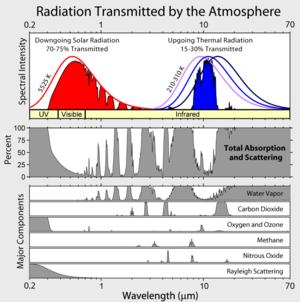Lab experiments have uncovered a new material that soaks up carbon dioxide and methane
There is a new sponge that researchers hope could absorb greenhouse gases from power plants one day.
In a recent study, scientists at Lehigh University created a new material that pulls carbon dioxide and methane selectively from a stream of other gases. In theory, the new spongy substance could sop up heat-trapping gases emitted from the burning of coal or natural gas.
“There is no fundamental difference in doing this in the lab versus doing it at industrial scale,” said Kai Landskron, an assistant chemistry professor at Lehigh University and a co-author of the study, which appeared in Nature Communications in July.
There have been other attempts to synthesize carbon-sucking materials, but the resulting absorbers often were expensive, consumed a lot of energy to absorb CO2 or didn’t work at high temperatures, said Landskron. The new material operates in heat as high as 400 degrees Celsius, according to the study.
The researchers created the substance using diaminobenzidine and hexachlorocyclotriphosphazene, which are relatively cheap chemicals in comparison to others considered for carbon absorption, said Landskron.
“The positive and exciting thing about the material is that it is made from relatively cheap starting materials,” said Dianne Wiley, an engineering professor at the University of New South Wales who did not participate in the research. “That is often a problem with other materials that are being tested at the moment.”
Other attempts to make similar sponges, for example, required man-made chemicals synthesized in the lab as building blocks, according to Landskron.
Catch and then release
The researchers said they also solved a dual challenge of creating matter that grabs CO2 and methane initially, but can release the gases easily for later permanent storage underground.
Once they developed the sponge, Landskron and his team found that the material had a much higher uptake of carbon dioxide and methane than other gases such as nitrogen.
That is important, the researchers said, since the flue gas from coal plants typically consists of 70 percent nitrogen. Any capture system needs a higher affinity for greenhouse gases than other types of emissions, explained Landskron.
In theory, the new material could be placed into a tower in a building adjacent to a power plant, he said. The flue gas generated from, say, the burning of coal, then would run via pipeline through the material before entering a smokestack, he said. The material is capable of capturing 90 percent of the CO2 from a gas stream, he said.
After the absorption of CO2, the gas could then be removed by changing the heat and pressure around the material, he said. It then could be compressed and stored permanently underground to prevent it from reaching the atmosphere, he said.
Bookmark this page for “absorb greenhouse gases” and check back regularly as these articles update on a very frequent basis. The view is set to “news”. Try clicking on “video” and “2” for more articles.









